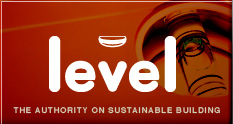Energy
Designing homes to conserve energy and use it efficiently, from sources that cause least environmental harm.
Wetbacks
Wetbacks generally provide a boost to the water heating system, particularly in the winter when most required. They are most suitable for cold climates where a lot of space heating is used.
The combustion process of the solid fuel burner heats a water jacket installed in the firebox. Options are available for 1.5–4 kW water jackets. Water circulates through the water jacket, then back to the storage heater.
Wetbacks must meet a minimum thermal efficiency of 65%. Burners that meet this requirement can be found on the list of authorised burners on the website of the Ministry for the Environment. Some wetbacks are available with an efficient greater than 80%.
When woodburners are tested to see whether they pass 65% efficiency, any water heating that may be provided by a wetback is not considered. Some burners can pass the efficiency test without a wetback but fail when a wetback is installed.
Most wetbacks circulate the water by a thermo-siphon effect (i.e. warmer water rises and cooler water falls, creating a natural flow through the water jacket). Some manufacturers specify a minimum gradient for the hot water supply pipe from the wetback to storage cylinder so that the water can naturally circulate. The hot water cylinder should be close to the heat source to minimise heat loss. The compromise may be that longer pipe runs are required to hot water outlets than would otherwise be needed. Large diameter wetback water pipes (25 mm) are recommended to improve flow.
Wetback system pipework gradient provisions are also provided by Building Code Acceptable Solutions G12/AS1 (6.13 and Figure 15) and G12/AS3 (AS/NZS 3500.4:2021 Section 7).
The November 2023 Building Code update included amending Acceptable Solution G12/AS1 to cite Part 4 of NZS 4603:1985 Installation of low pressure thermal storage electric water heaters with copper cylinders (open-vented systems). NZS 4603 provides more comprehensive provisions for designing and installing wetback water heating systems using natural circulation. Part 4 Figure 5 includes details of an ‘over-and-under’ wetback water heating system that can be used where the storage cylinder is not installed adjacent to the solid fuel heater.
Some systems use pulse valves or a pump to allow the storage cylinder to be located further away from the solid fuel burner.
It is a good idea to contact your local building consent authority early in the process for any particular requirements or advice they may have about wetbacks. You will need a building consent to install a wetback. The work must be carried out by a certifying plumber or by a registered or licensed plumber under the supervision of a certifying plumber.
Key factors when incorporating a wetback system:
- Wetbacks generally only make a substantial contribution to water heating in cold climates where a lot of space heating is used.
- Some burners produce a higher proportion of their output as hot water – these are suited to houses where space heating demand is lower.
- The input from the wetback must be supplemented by other means of heating when the solid fuel burner is not being used.
- The emissions rating for a solid fuel burner incorporating the water jacket must be determined – as the water jacket cools the combustion process, the particulates emissions level will increase.
- The installation of water jackets within the firebox reduces the heat output to the adjacent space.
- The circuit between the water jacket and the storage cylinder must be open-vented for safety. Storage cylinders that are specifically designed for use with a wetback are available.
- The isolated open-vented supply line must incorporate a valve to allow the water to be replenished if overheating occurs. Overheating will cause a drop in pressure in the line, which will activate the valve to replace the water lost from the top of the vent pipe.
- Only copper piping must be used.
- Wetbacks are not suitable where the local water has a very high lime content because lime can build up inside the coil.
- Water needs to run through the wetback whenever the fire is burning.
Typically, the hotter the fire burns, the more hot water the wetback will produce. If this means the living area many get too hot, some manufacturers recommend installing heat transfer systems that take excess heat to other rooms in the home.
The simplest units are installed high on an internal wall and move warmed air directly through to an adjacent room. Proprietary units are available that use 40–120 W fans to move the warm air through 150 mm or 200 mm insulated ducts in the roof space to ceiling outlets in other rooms. Some systems have thermostats and operate only when the temperature in the source room is above a certain level.
Updated: 25 January 2021

